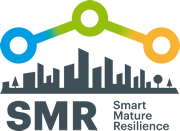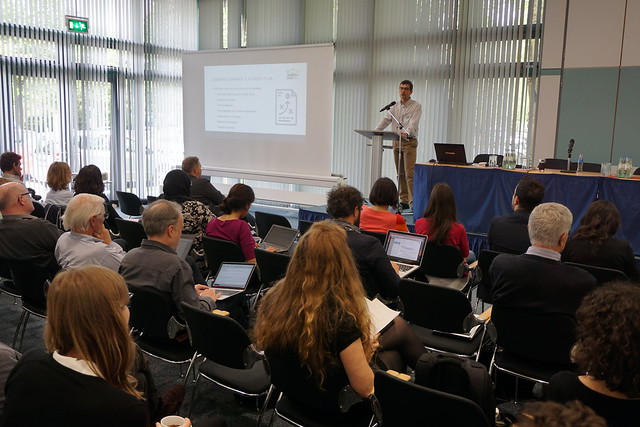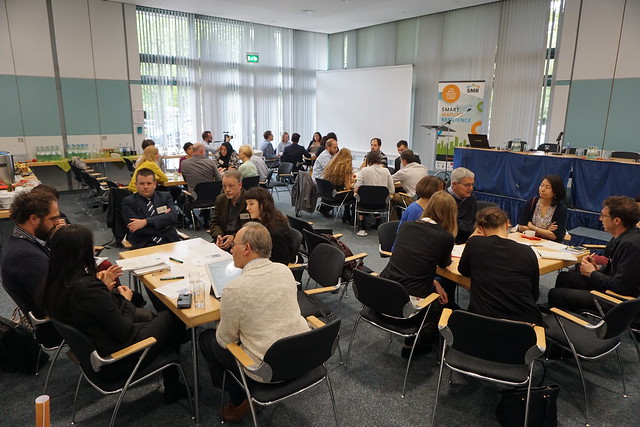Just days after the IPCC published its Special Report on Global Warming of 1.5°C, setting a new urgency for climate action within the next 12 years, the RESIN team gathered in Brussels for the project's final event. Effective climate action is a long term proposition, demanding cooperation and knowledge sharing across disciplinary and geographical borders. The RESIN project has progressively added to its network throughout the project, added 17 cities to its ‘Circle of Sharing and Learning,’ and included many more colleagues and peers in its collaborative community. For the final conference, the team invited three other Horizon 2020-funded projects to collaborate on the event “Climate Resilient Cities and Infrastructure 2018”: two ongoing projects, RESCCUE and BRIGAID, and a third that has been recently completed: EU-CIRCLE. All four projects are linked by a common concern for building climate resilience in European cities. Not only was this an occasion to share the findings of the RESIN project, but also to help establish a legacy for the work to date, and to explore new avenues to carry it forward. Over 100 people took part in the event, many of them representing municipalities that it is hoped will take up the RESIN tools in their day-to-day work. When it started in 2015, the RESIN project sought to address the following broad issues:
1. Cities were in need of decision support tools for climate adaptation planning
2. Risk assessment was not comparable between cities in Europe
3. No standardised collection of adaptation options was available
These were reflected on in the opening plenary discussion, where the project’s key outputs were introduced by RESIN research partners and a representative from the City of Ghent, who has followed the project as part of the RESIN ‘Circle of Sharing and Learning’. The audience also heard from Arnoldas Milukas (Head of Unit, H2020 Environment and Resources, EASME), Peter Bosch (RESIN project coordinator, TNO), Marc Velasco (Aquatec – SUEZ Advanced Solutions, RESCCUE project) and Ingrid Konrad (Chief City Architect, City of Bratislava).
“The RESIN project provides us with international know-how. Adopting the Adaptation Options Library was welcomed as a modern tool for city planning, its test version online is already available in the Slovak language and will be made available to the public within the framework of the RESIN project.” - Ingrid Konrad (Chief Architect, City of Bratislava)
Two blocks of parallel sessions then explored these outputs in greater depth: the urban adaptation e-Guide, the European Climate Risk Typology, the IVAVIA impact and risk assessment methodology, and the Adaptation Options Library. One session titled ‘Find the gaps: Where will adaptation research go from here?’ looked towards the future research landscape, with potential directions identified being more meaningful climate impact indicators at the city scale and improved multi-level governance. A stronger focus on action-oriented research approaches involving social scientists could support such an agenda.
In the closing discussion, project coordinator Peter Bosch (TNO) noted that international policy frameworks and local action are moving closer together. While at the beginning of RESIN many people working in cities seemed not to know what the Sendai framework was, “now, on a very practical level, people are realising that there is the need to link the energy transition to climate adaptation and on the city level to translate the SDGs to something tangible.”
A photo gallery of the event is available on Flickr. A full report on the final conference is available on the RESIN website.















